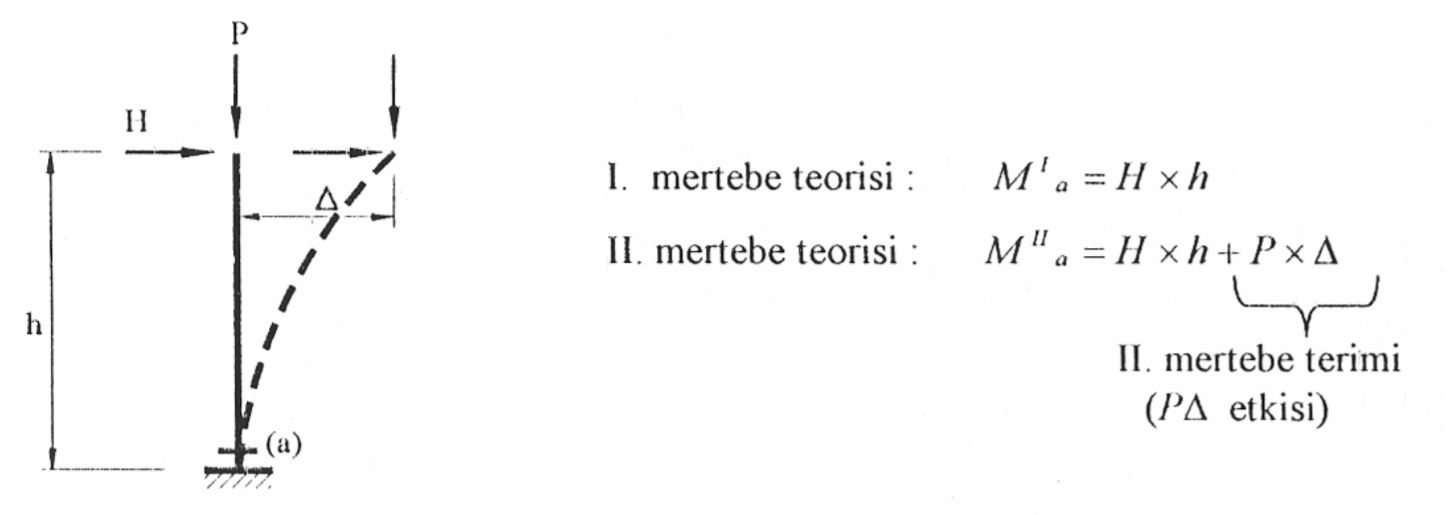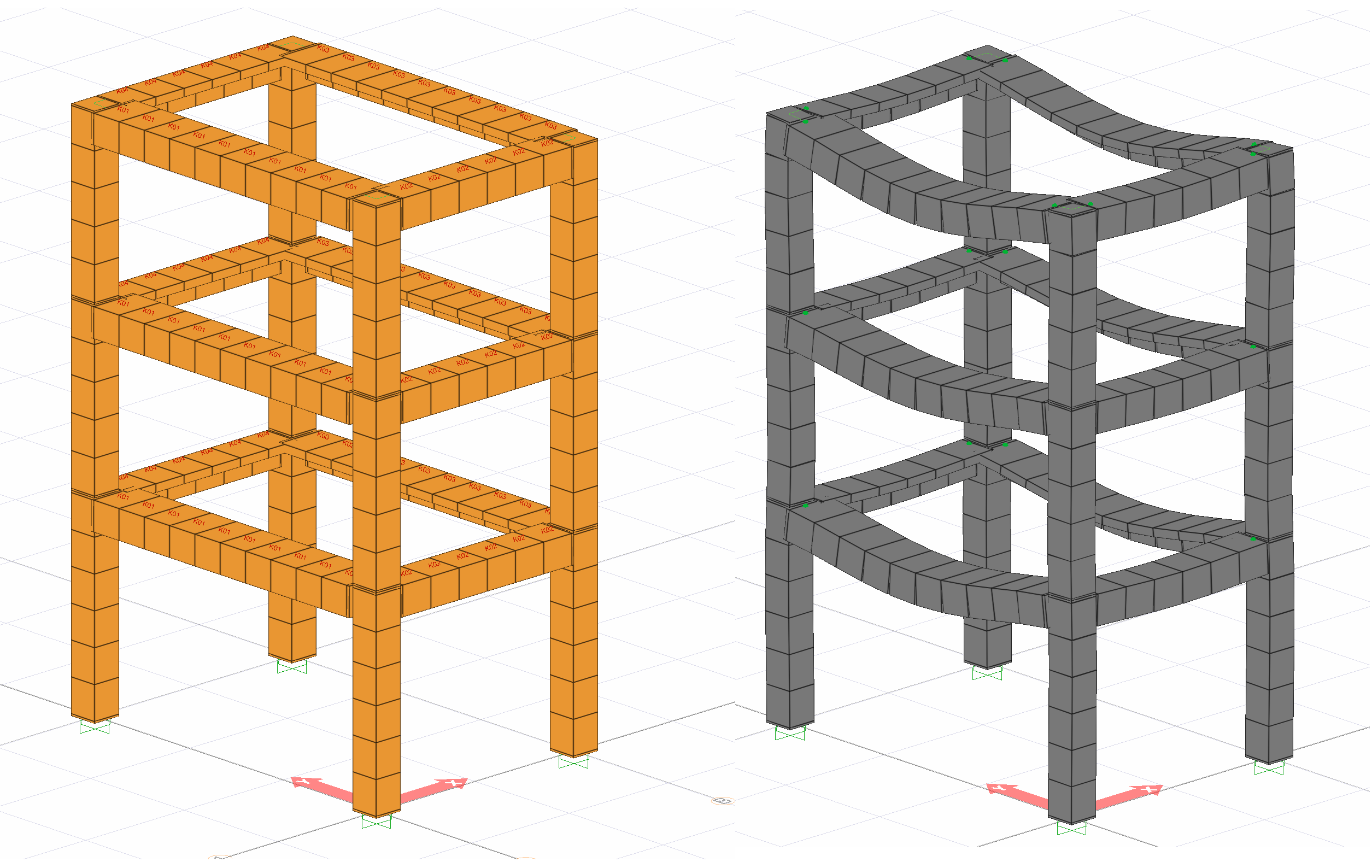Second-Order Effects (P-δ and P-Δ)
Consideration of second order effects (p-δ and p-Δ) is under user control.
The non-linear structural calculation is automatically applied, considering the structural vertical loads and the second-order effects incrementally applied to the carrier system. The internal forces and strains obtained from this calculation are automatically taken into account as the initial condition of the pushover analysis.
Non-linear deformations are automatically taken into account as a starting condition in the evaluation of new buildings and existing buildings.
ICONS
E d (H) = Horizontal seismic effect on the basis of the designwith strike-joint application
E d (X) = Seismic effect in (X) direction
E d (Y) = Seismic effect in (Y) direction
E d (Z) = Vertical seismic effect
G = Fixed load effect
n = Live load contribution factor
Q = Live load effect
Q e = Effectiveliveload effect
S = Snow load effect
p-δ =Second-order effect caused by the curvature of the element under the effect of axial force and bending moment
p-Δ = Second-order effect due to the axial force effect as a result of the displacement of the element nodal points
According to TDY 5.2.2.2 , if the Evaluation and Design Based on Strain (GDT) approach is applied to the structure, the earthquake calculation to be made with nonlinear calculation methods (any thrust analysis or nonlinear analysis in the time domain) should be E d (H) before Non -linear static calculation in which static vertical loads other thanwill be done. The internal forces and strains obtained from this calculation are taken into account as the initial value in the horizontal earthquake calculation. In this case, the non-linear static calculation applied using vertical loads is made according to the following loading condition. The internal forces and strains obtained as a result of this analysis are taken into account as the initial value of the horizontal earthquake calculation.
G+nQ+0.2S+0.3E d (Z)
In this loading case, n is the Live Load Mass Participation Coefficient as explained above and is calculated from Table 4.3 . For example, before applying the pushover analysis to a house (n=0.3) where there is no snow load, the nonlinear static calculation is applied incrementally under the following loading condition as the initial step (i=0) .

G+0.3Q+0.3E d (Z)
In this nonlinear static calculation , the nonlinear behavior of the structure in terms of geometry and material is taken into account.

In the non-linear analysis in terms of geometry, second-order effects that occur due to the axial forces occurring in the building elements are taken into account. Second-order effects are divided into p-δ and p-Δ. The figure on the right shows how the effects of p-δ and p-Δ are on an element in a representative way. The p-δ effect is caused by the axial pressure force on the element trying to increase the displacement plasm caused by the element's own curvature. The p-Δ effect, on the other hand, creates additional moments in the axial pressure force due to the displacements of the nodal points of the element. p-Δ is explained in more detail in the picture below.

Details of material nonlinear analysis Concentrated Plasticity Model andDistributed Plasticity Models explained in detail under the titles ofDistributed Plasticity Models. According toTDY 5.2.2.2, ifthere is a plasticization situation in the non-linear analysis made under the effect ofvertical loads, G+nQ+0.2S+0.3Ed(Z),this situation is not allowed in new buildings and reinforced buildings. However, non-linear deformations (plastic hinges) are taken into account as the starting value if the SGDT approach is applied for the evaluation of existing buildings.
In order to consider the second order effects p- p and p-Δ effects, the analysis is done by dividing the elements sufficiently. In this way, the modified system at the initial or any i th step of the pushover analysis is considered as the initial condition for the next step. The following image shows the analysis model and the modified system, considering the second-order effects of a sample model.

Next Topic
